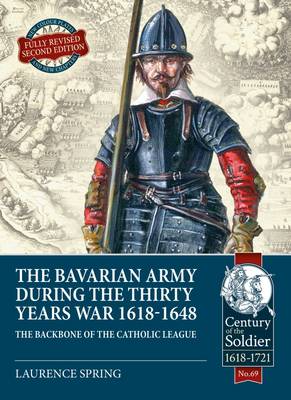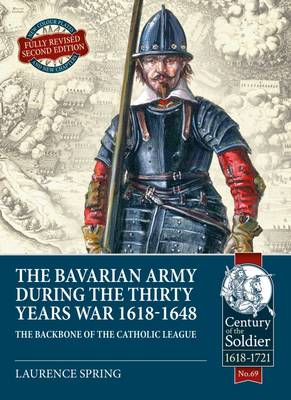
- Afhalen na 1 uur in een winkel met voorraad
- Gratis thuislevering in België vanaf € 30
- Ruim aanbod met 7 miljoen producten
- Afhalen na 1 uur in een winkel met voorraad
- Gratis thuislevering in België vanaf € 30
- Ruim aanbod met 7 miljoen producten
Zoeken
The Bavarian Army During the Thirty Years War, 1618-1648
The Backbone of the Catholic League
Laurence Spring
€ 34,95
+ 69 punten
Uitvoering
Omschrijving
The Bavarian Army has been overshadowed by those of Gustavus Adolphus' and Wallenstein's Armies, but it was one of only a few armies to have fought throughout the Thirty Years War, first as part of the Catholic League and then an independent army after the Peace of Prague. Among the generals of the Bavarian Army were Count Johan von Tilly and Gottfried von Pappenheim, who are two of the most famous generals of the war. This book covers not only the Bavarian Army's organization, but also has chapters on recruitment, officers, clothing, weaponry, pay and rations of a soldier during the Thirty Years War. As well as life and death in the army, this book also looks at the women who accompanied it. The chapter on 'civilians and soldiers' looks at the impact of the war on the civilian population, their reaction to it and the infamous sack of Magdeburg which sent shockwaves across Europe. This chapter also looks at the impact on Bavaria by having Swedish, Spanish and Imperialist troops quartered upon it and how this affected the country's war effort. In addition there are chapters on regimental colors and a detailed look into the tactics of the time, including those of Spain, Sweden and the Dutch. As well as using archival and archaeological evidence to throw new light on the subject the author has used several memoirs written by those who served in the army during the war, including Peter Hagendorf who served in Pappenheim 's Regiment of Foot from 1627 until the regiment was disbanded after the war. Hagendorf's vivid account is unique because not only is it a full account of the life of a common soldier during the war, but also records the human side of campaign, including the death of his two wives and all but two of his children. This book is essential reading to anyone interested in the wars of the early seventeenth century, not just the Thirty Years War.
Specificaties
Betrokkenen
- Auteur(s):
- Uitgeverij:
Inhoud
- Aantal bladzijden:
- 240
- Taal:
- Engels
- Reeks:
Eigenschappen
- Productcode (EAN):
- 9781913336028
- Verschijningsdatum:
- 22/06/2021
- Uitvoering:
- Paperback
- Formaat:
- Trade paperback (VS)
- Afmetingen:
- 244 mm x 175 mm
- Gewicht:
- 566 g

Alleen bij Standaard Boekhandel
+ 69 punten op je klantenkaart van Standaard Boekhandel
Beoordelingen
We publiceren alleen reviews die voldoen aan de voorwaarden voor reviews. Bekijk onze voorwaarden voor reviews.











